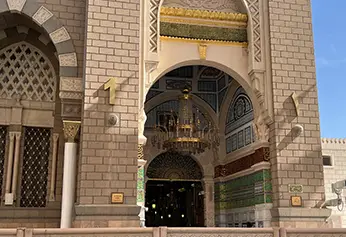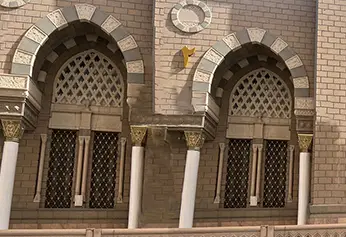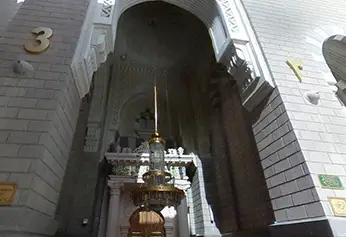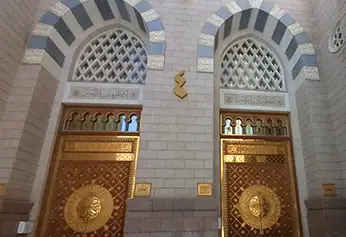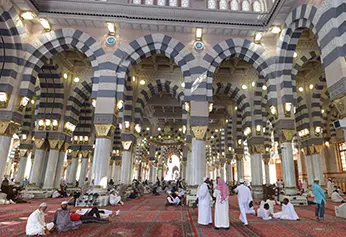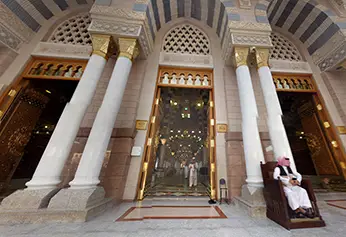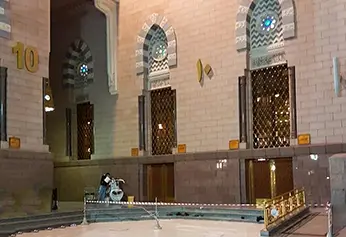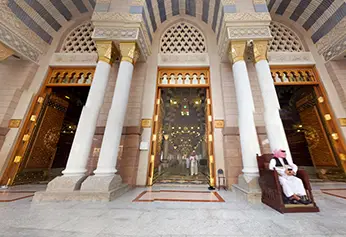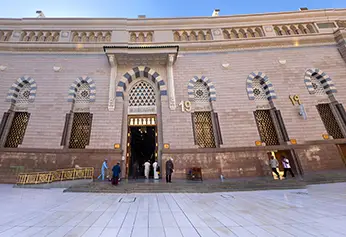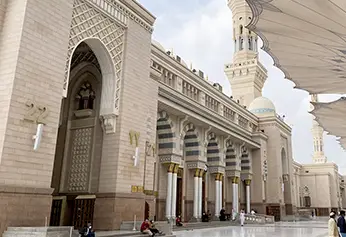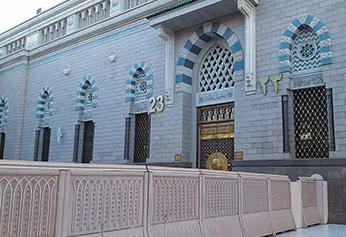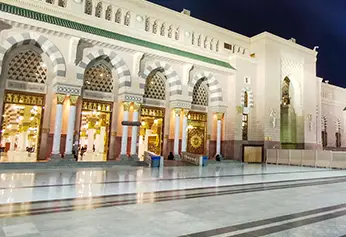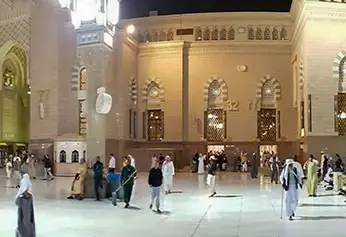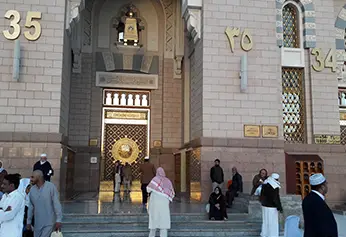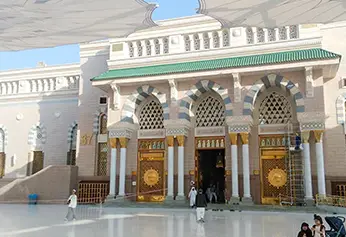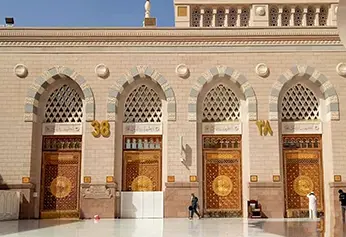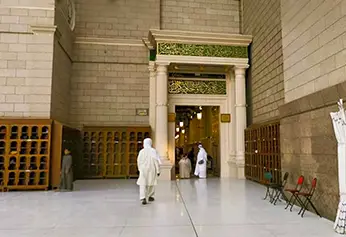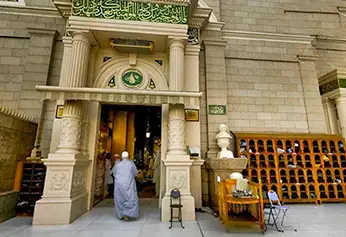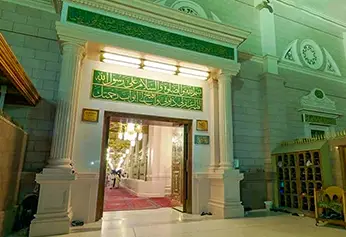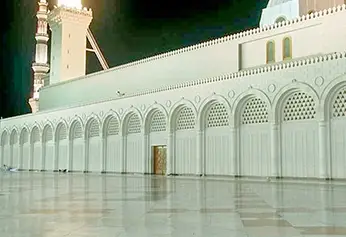For you desired umrah packages & prices please feel free to send us a mail. You will get details of our umrah packages from us within very short time In Sha Allah. For any urgency please call us:
Call Us: 01844-509199Get a Quotation!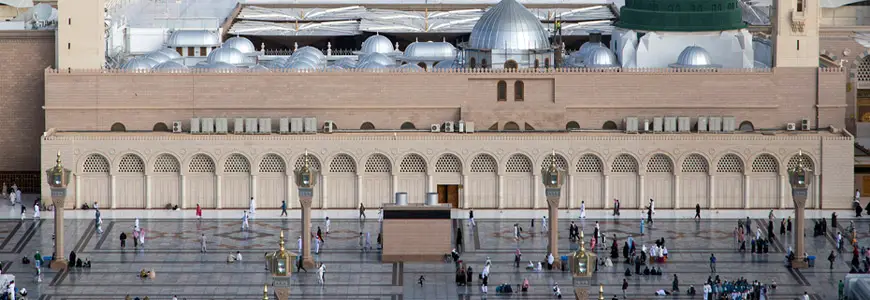
Gates of Al Masjid an Nabawi, Madinah, Saudi Arabia
Masjid an-Nabawi, located in Medina, Saudi Arabia, is considered the second holiest mosque in Islam and one of the largest structures in the world. Any large structure in the world has many doors. This mosque is no exception. There are many doors here too. These gates of Al Masjid an Nabawi welcome all pilgrims and worshipers during the entrance.
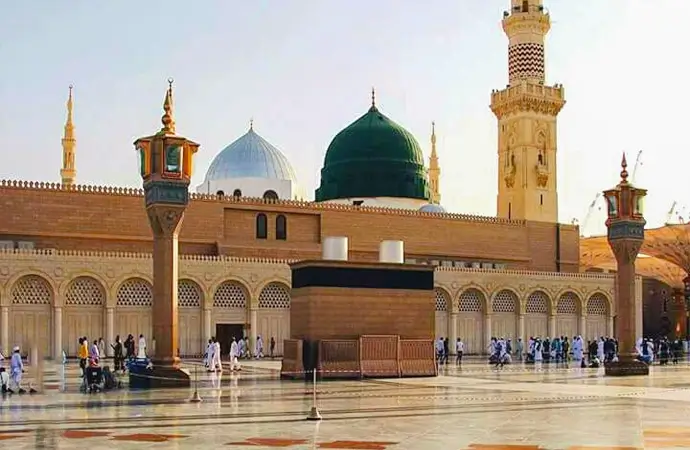
It was originally built by the Prophet Muhammad (Sallallahu Alaihi Wasallam) and has since undergone numerous expansions. The mosque's renowned Green Dome marks the burial site of Muhammad (Sallallahu Alaihi Wasallam). Its architecture embodies intricate Islamic design and craftsmanship, attracting millions of pilgrims annually.
List of 42 gates of Al Masjid an Nabawi
The Masjid an-Nabawi, or Prophet's Mosque has 42 doors. They also have different names. These doors have been built at different times. Below are the details about it:
Bab as-Salam (Door No.1)
As-Salam (السلام) is an Arabic word. The meaning of the word is peace. With this word named gate no 1 of Masjid an-Nabawi. It is the largest and most decorated gate of the prophet’s mosque. This gate is situated in the north-western corner of the masjid’s Ottoman prayer hall. 2nd caliph of Islam Omar bin Khattab (R) built it during his reign circa 640 CE (18 Hj).
Bab Abu Bakr (Door No.2)
Abu Bakr (R) is the name of a great companion of the Prophet (Sallallahu Alaihi Wasallam). The second gate of the mosque complex is named after him. It is situated on the north side next to Bab as-Salam. During construction, it was known as 'Khukha Abu Bakr'. However, in the first expansion by the Saudi government, the name was changed from 'Khukha Abu Bakr' to 'Bab Abu Bakr (باب ابو بكر)'.
Ar-Rahmah is an Arabic word, the meaning of its kindness. This oldest gate of the Nabwi complex is named after this word. Muhammad (Sallallahu Alaihi Wasallam) installed the western wall in his lifetime. The gate was situated in front of Atkia Bint Abdullah bin Iyajid, so it was called Bab Atika.
The Meaning of the Arabic word `Hijrah’ is migration. Rasulullah (Salallahu Alaihi Wasallam) migrated from Makkah to Madinah. This door has been named Bab Hijra to commemorate this Hijra. It is situated at the southern end of the Masjid Nabawi complex and to the left of the Bab ar-Rahmah.
If you want to go to the roof of the prophet’s mosque then you have to come to this gate. You will get an escalator here and can go up through it.
Imam Bukhari was an Islamic and Hadith scholar. The 10th gate of the Masjid al-Nabawi has been named after this scholar. It is located on the western flank of the mosque and between the Bab Malik al-Saud and Bab Malik Abdul Majeed. Entering through this gate, everyone can visit the library of the mosque.
For you desired umrah packages & prices please feel free to send us a mail. You will get details of our umrah packages from us within very short time In Sha Allah. For any urgency please call us:
Call Us: 01844-509199Get a Quotation!This gate is located on the northwestern flank of the mosque. Sultan Abdul Majeed was an Ottoman Empire. The gate has been named after this empire. The gate has five small portals, 2 large portals, and a single minaret on the southern side, which merges with Masjid an-Nababir Bab Umar ibn al-Khattab.
Bab Umar ibn al-Khattab (Door No. 16, 17, 18)
Umar ibn ul-Khattab (باب عمر بن الخطاب) is the greatest companion of the prophet Muhammad (Sallallahu Alaihi Wasallam). The gate is named after this companion. The Bab Umar is located on the north wall in the northwest corner of the main complex. Interested visitors can visit the mosque's library by entering through this gate.
Badr is the name of the first battle of Islam. Where Muslims won against the Quraish. Door No. 19 is named after this battle. It is in the northern wall of the masjid and between Bab Malik Fahad and Bab Umar bin Khattab. Here is a single portal entrance through which the worshipers enter the mosque.
For you desired umrah packages & prices please feel free to send us a mail. You will get details of our umrah packages from us within very short time In Sha Allah. For any urgency please call us:
Call Us: 01844-509199Get a Quotation!Uthman ibn Affan ( عثمان ابنِ عفان) (R) is a respected companion of the Prophet (Sallallahu Alaihi Wasallam) and was 3rd caliph in Islam. This gate is named after Uthman (R). It is situated on the eastern corner. The gate allows direct access to the northeast women's section of the Prophet's Mosque.
Bab Ali ibn Abi Talib (Door No. 28, 29, 30)
Ali ibn Abi Talib is a companion of Muhammad (Sallallahu Alaihi Wasallam). He was a brave warrior and 4th caliph in Islam. The gate has been named after this caliph. It is located on the eastern flank of the masjid. It is one of the largest gates of Masjid an-Nabawi.
Ghifar is the name of an Arab pagan tribe. The inhabitants of this tribe lived near Medina. Abu Dhar al-Ghifari was a resident of this tribe. He is a companion of the Prophet (Sallallahu Alaihi Wasallam). It is named after him. The gate is located between Bab-i Abdul Aziz and Bab-i Ali on the eastern side. It is one of the smaller gates of Masjid an-Nabawi.
For you desired umrah packages & prices please feel free to send us a mail. You will get details of our umrah packages from us within very short time In Sha Allah. For any urgency please call us:
Call Us: 01844-509199Get a Quotation!Imam Muslim was a Hadith and Islamic scholar. This gate is named after him. It is located along the eastern wall of the masjid and near the Abu Dhar Ghifari gate. It is one of the smaller gates of the mosque.
Abdul Aziz was a king of Saudi Arabia. This gate is named after this king. It is one of the largest gates of the Masjid Nabawi with five small and two large portals. Bab-e Abdul Aziz has one minaret on the southern side. It is situated on the southeast corner of the King Fahad expansion.
It is a gate where the escalators with the help of which you can go to the top of the mosque. Also, you can go to the rooftop of it.
Bab Makkah (Door No. 37)
The Bab Makkah is situated on the south side of the Main Malik Fahad Extension Building. Named after the city of Makkah, it's one of two identical gates providing access to the mosque, both on the south wall of the second Saudi extension. The other gate is on the south side of the Bab Quba.
The Bab Bilal (باب بلال), meaning the Gate of Bilal, is named in honor of Bilal ibn Rabah al-Habashi, the first Muazzin of Islam. It sits on the southern side of the mosque's newest expansion by King Fahad. Currently, this gate features four doors for entry, but when it was first built during the Second Saudi Expansion, it was a smaller gate with just two doors, each topped with its arch.
Nisa is an Arabic word. The meaning of this word in English is women. The Bab Un Nisa (باب النساء), meaning the gate of women. It was specially installed by Umar Ibn Kahattab (R). At that time both men and women used to enter through this gate. But during the time of Umar bin Abdul Aziz, it was reserved and used exclusively for women. It is one of the three gates located along the eastern wall of Masjid al-Nababi, closest to the Prophet Muhammad's tomb.
For you desired umrah packages & prices please feel free to send us a mail. You will get details of our umrah packages from us within very short time In Sha Allah. For any urgency please call us:
Call Us: 01844-509199Get a Quotation!Jibreel (A) is the name of an angel. The gate is named after him. It is mentioned that Jibril (Gabriel) used to enter the Prophet's Mosque through this door. This door is also known as Bab un-Nabi. It is located between Bab al-Baqi and Bab al-Nisa and along the west wall of the Ottoman prayer hall of the Prophet's Mosque.
Bab al-Baqi (Door No. 41)
Baki is the name of a graveyard in Medina located near Masjid al-Nababi. This gate is named after this graveyard. It is located near the burial chamber of Prophet Muhammad (Sallallahu Alaihi Wasallam). There is a minaret above the gate. There are two Arabic inscriptions, one on the lintel and the other on the upper architrave. The facade of the gate is flanked by two pillars.
Abdul Majid is the name of an Ottoman sultan, after whom the gate is named. It was the central gate on the north side of Masjid un-Nababi. However, it was incorporated with the mosque during the second Saudi expansion.
Are you interested in visiting these gates?
Holy Hajj & Umrah is a trusted and leading Umrah travel agency in Bangladesh. If you’re interested in visiting the gates of Masjid Nabawi and performing Umrah with ease, contact this agency to receive exceptional services, and fulfill your dreams of visiting these gates.
Call Us: 01844-509199

